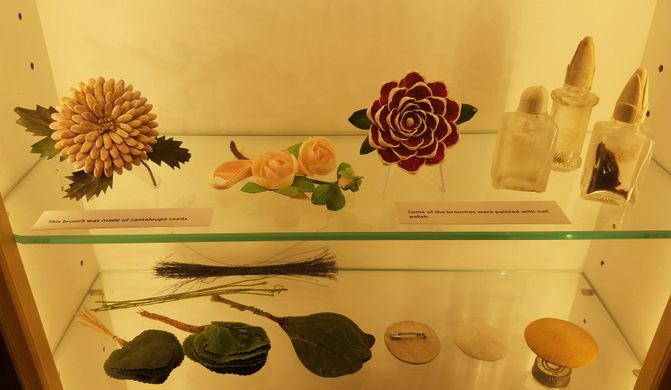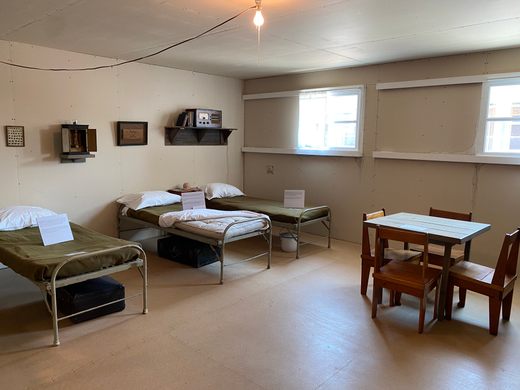Topaz Museum
A museum in rural Utah documents the history of the Japanese Americans who were forcibly relocated there.
On February 19, 1942, President Franklin Delano Roosevelt signed Executive Order 9066, authorizing the military to forcibly relocate the 120,000 Japanese-American citizens from areas along the western coast of the United States into remote camps. The Topaz War Relocation Center was one such camp, located in rural western Utah.
Once enforcement of the new law began, Japanese Americans were given mere days to sell off any possessions they weren’t able to carry or entrust to friends and report to the military for relocation. Those who didn’t voluntarily check themselves in were arrested. The Japanese-American internees were then transported to one of the detention camps located around the country, primarily in the American west.
Life in the camps was harsh. When internees began arriving, the structures in the camps were still under construction. The shoddily built barracks let in drafts of dust during the summers and snow during the winters. At Topaz, temperatures in the summers frequently exceeded 100°F and in the winters the average temperature was below freezing. To speed up construction of the camp, internees were conscripted to work on the buildings. No furniture was provided, so they had to fashion their own with scraps of wood the army threw out. The perimeter of the camp was lined with a barbed wire fence and guard towers.
Between the internees, staff, and guards, over 9,000 people lived in the camp at Topaz, making it the fifth largest city in Utah at the time. The internees passed their time in camp growing produce (which won awards at the Millard County Fair), playing sports, and making art. Internees published their own newspaper, Topaz Times, and a literature magazine called Trek. Detainees considered loyal by camp staff were permitted to leave the camp during the day to find work on nearby farms.
From 1943 to 1945, internee Dave Tatsuno used a film camera smuggled into Topaz to shoot home movies of what life was like inside the camp. Tatsuno’s footage was made into a documentary called Topaz, and today is one of only two home movies preserved in the Library of Congress (the other being the Zapruder film of President John F. Kennedy’s assassination).
After the war ended, most of camp was sold off, and the only remains today are a grid of roads and the concrete foundations where buildings formerly stood. In 1980, President Jimmy Carter created the Commission on Wartime Relocation and Internment of Civilians to investigate the necessity of Japanese internment. In 1983 the commission released its report, stating that the internment had not been of military necessity but was instead the result of “racial prejudice, wartime hysteria, and a failure of political leadership.” In 1988, President Ronald Reagan signed the Civil Liberties Act of 1988 which was an official apology from the government to those who were interned at the camps and authorized the payment of $20,000 to anyone who was detained.
Today, a museum in nearby Delta, Utah, documents this chapter in American history. On display are hundreds of artifacts, including art made by the detainees, uniforms, copies of the Topaz Times and Trek, memorabilia from the two elementary schools and high school that operated in the camp, and a recreation of what a typical barrack would have looked like in Topaz.
Know Before You Go
The museum is open Monday through Saturday from 10 a.m. to 5 p.m. The site where the camp stood is located about 16 miles from the museum, outside of town. The museum provides maps and instructions to those interested in seeing the former site of the camp.



























Follow us on Twitter to get the latest on the world's hidden wonders.
Like us on Facebook to get the latest on the world's hidden wonders.
Follow us on Twitter Like us on Facebook